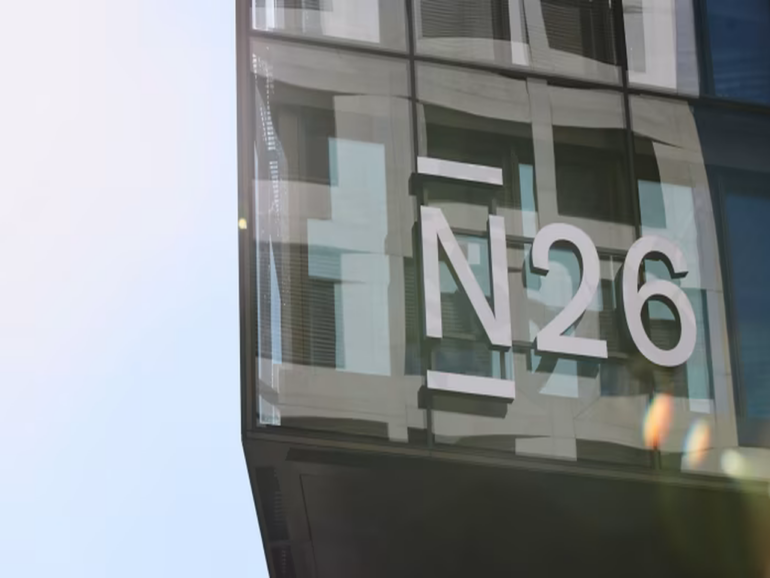Two years after arriving in Brazil, neobank N26 has announced intentions to pull out of its Latin America endeavor.
The German digital bank, one of the largest in the world, set foot in 2021 in the region’s largest economy to expand its reach overseas. Now, it said it was scaling back the pilot project as it seeks to refocus on its well-established markets. Tech startups worldwide are reckoning with a context of much lower investment capital, yet N26’s lukewarm foray in Brazil reflects the complexity for non-LatAm players to compete with local players and successfully implement a regional strategy.
A Berlin-based fintech backed by billionaire Peter Thiel and China’s Tencent Holdings, N26 announced in November it would put an end to a testing phase in the country. The decision, the company said, was driven by “N26’s strategy of focusing on its key European markets.”
This strategic shift follows N26’s previous exits from the UK and the United States. This leaves the bank concentrated on continental Europe, including Germany, France, Italy, and Spain.
From its inception in Brazil, the digital bank encountered intense competition. With a valuation of $9 billion in late 2021, local media indicated that the neobank had attracted nearly a quarter of a million customers by mid-2023. However, this figure pales in comparison to other prominent Brazilian digital banks, which boast customer bases in the millions and operate on a massive scale, presenting a great challenge for competition.
Fierce digital competition

Leading the charge in Brazil’s digital banking space is Nubank, the fintech founded in 2012 by David Velez.
It has recently reported over 90 million customers in the region, most of which are Brazil-based. The neobank, backed by Berkshire Hathaway, rode a steep wave of digitization in this South American nation. Its sheer growth and scale have made it a formidable rival to new entrants in the digital finance space. And it has already achieved profitability. It raked in $2.1 billion in the last quarter, up from $1.3 billion in the year-ago period.
In a credit market largely commanded by established local traditional banks, the rapid ascent of newcomers like Nubank has carved out a substantial niche. Additionally, other neobanks have experienced significant growth. Mercado Pago, the digital finance arm of the Argentine e-commerce behemoth Mercado Libre, has made notable inroads into the country, boasting a customer base of well over 40 million in the region, with a substantial portion hailing from Brazil. Lesser-known but sizable local competitors, including Banco Inter, PicPay, and PagBank, have also successfully attracted millions of clients.
The first wave of neobank expansion
“The first wave of neobank expansion in Brazil was very much driven by Nubank’s success,” said Sandro Reiss, president of the Brazilian Association of Digital Credit, or ABCD, in an interview with Fintech Nexus. “It was one of the very few companies worldwide that achieved such monumental scale.”
Drawn by a growing digital market, which has taken a massive leap forward on the heels of major nationwide digitalization initiatives such as Pix, European digital banks have set up shop in the country. Beyond N26, English neobank Revolut has also begun offering its products in Brazil.
But eventually, Reiss said, neobanks will need to step up their credit offering.
“The general offering of neobanks is converging to a very similar product,” he said. Most players started out with a virtual account and small credit offerings. “There is a limit to how much better a user experience can be when you offer the same thing.”
For that reason, he said, digital banks in Brazil have been expanding credit limits to compete for customer’s principality. “The neobanks that were not doing that did not make it,” he said.
N26’s strategy
N26’s Brazilian operations, with around 70 employees, will be phased out over the next two months.
Its exit from Brazil is also explained by the bank’s ongoing challenges. The lender has been on the radar of the German financial regulator, which has imposed certain restrictions on its customer acquisition process. Last year, it cut 4% of its workforce in the face of a more challenging scenario for fintechs.
The bank did not disclose the number of clients in Brazil. However, it confirmed they represent a fraction of N26’s 8 million clients. N26’s presence in Brazil involved testing products, with potential customers invited to join a waiting list. Over the past decade, N26 raised $1.8 billion from investors, including Valar Ventures and Horizons Ventures.


